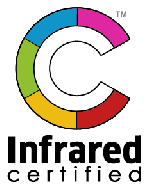|
Monthly mortgage payment almost 40% cheaper than 2006
Submitted by JonathanMeeker on Fri, 11/11/2011 - 17:45.
Housing affordability improved dramatically because of declines in both prices and mortgage interest rates, according to David Stiff, chief economist at Fiserv (FISV: 58.06 +1.49%). "The monthly mortgage payment for a median-priced single-family home is now $700, compared to $1,140 in 2006 — a decline of nearly 40%," he said in comments on the latest release from Fiserv. Home prices in the U.S. will decline 3.6% into mid-2012 and then rebound 2.4% in second half 2012 through the first half 2013, according to Fiserv Case-Shiller projections. Fiserv’s indices look at home price trends in 384 U.S. markets. Prices fell in 340 markets, with 302 of them hitting new lows in the second quarter. The National Association of Realtors found a similar trend. On Wednesday, the trade group revealed that the median price on existing home sales fell in most of the 150 metropolitan areas surveyed by the organization in the third quarter. Price declines and low mortgage rates have resulted in a ratio of monthly mortgage payments to median family income that is the lowest on record based on Fiserv analytics. Stiff said national purchase mortgage payments now account for only 13% of monthly median family income, down from 23% in the first quarter of 2006, and the lowest percentage since 1971. The double-dip in home prices that started in 2010 continued to take home prices lower this spring and summer, resulting in a 5.9% drop in single-family home prices in the second quarter of 2011 compared to a year ago, according to the indices. On a quarter-to-quarter basis, home prices jumped 2% in the second quarter and 4% in the third quarter. Although affordability has increased, Stiff said, housing demand remains depressed with existing home sales back to 1998 levels, with the average annual rate trending at 4.3 million units since June. Existing home sales fell 3% in September from a month prior, but remain higher than a year earlier. Sales of existing homes rose 7.7% in August despite tighter lending standards and appraisal problems. "Many households cannot finance first-time or trade-up home purchases to take advantage of lower home prices because of much stricter mortgage lending standards," Stiff said. "But even households with access to mortgage credit are hesitant to buy homes while job growth is weak and consumer confidence is low." He said if economic growth picks up in the second half of 2011, the housing market would find a bottom and begin a gradual recovery. With new housing construction at an all-time low and inventories of home inventory down 20%, lower levels of housing supply and rising demand next year will reduce downward pressure on prices. If homebuyers become more confident, many who are sitting on the sidelines should enter the market, causing prices to increase. "We should not expect a rapid rebound in home prices," Stiff cautioned. "Very large inventories of foreclosed properties must be liquidated and absorbed before the healthy functioning of housing markets is restored. Potential buyers must be convinced that the economic recovery is back on track and that the double-dip in home prices is nearly over before housing demand will begin to rise." by JUSTIN T. HILLEY
Submitted by JonathanMeeker on Fri, 11/11/2011 - 17:45.
|
Free recall check on all
appliances with each inspection!
    200% Guarantee DetailsOur 200% guarantee is so straight forward there is no need for fine print or searching endlessly…Here are the details in the front page;
If at time during inspection and before delivery of the report you do not like our services, what we are doing or any other matter, just tell us and we will leave..no questions asked. We will not charge you for the trip, time or anything else. We will then pay up to $300.00 for another inspector of your choice to come and complete your inspection upon presentation of their bill or receipt! |










Comments
Post new comment